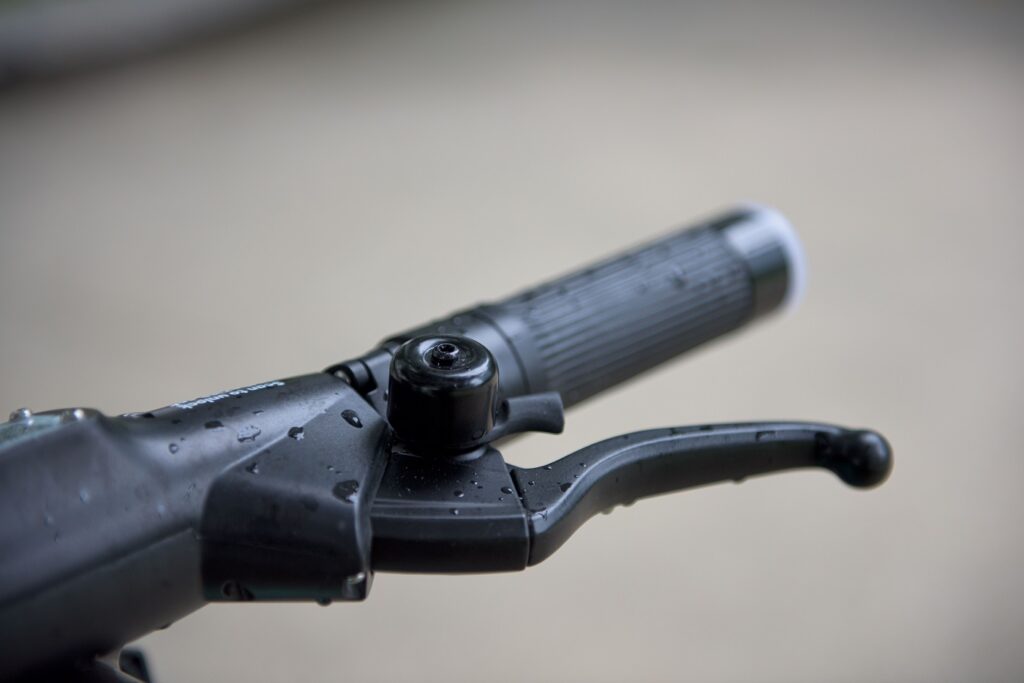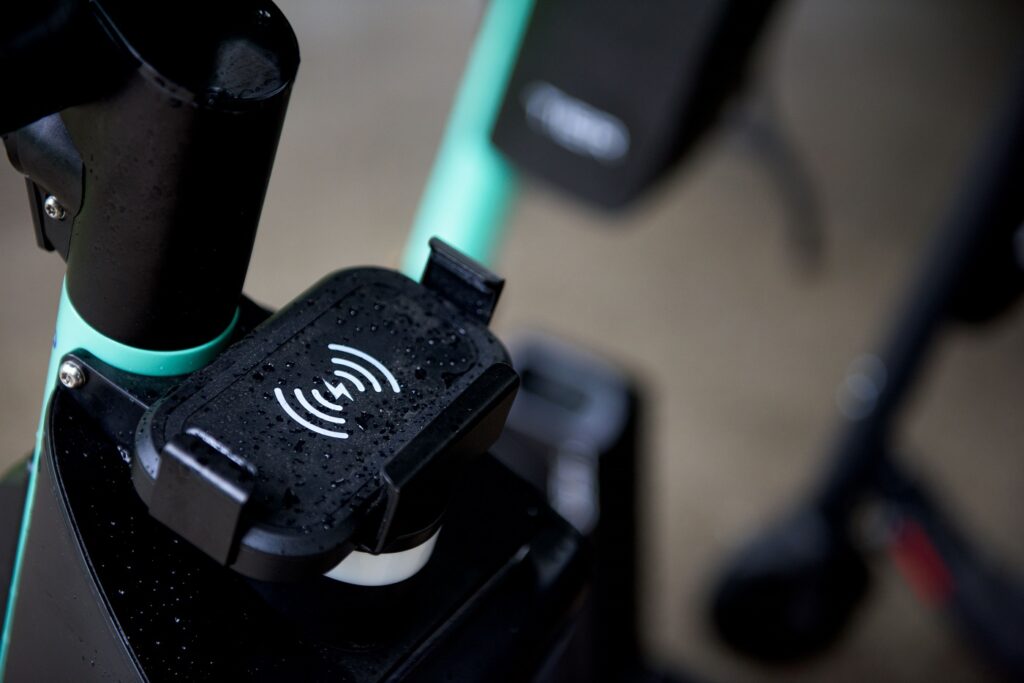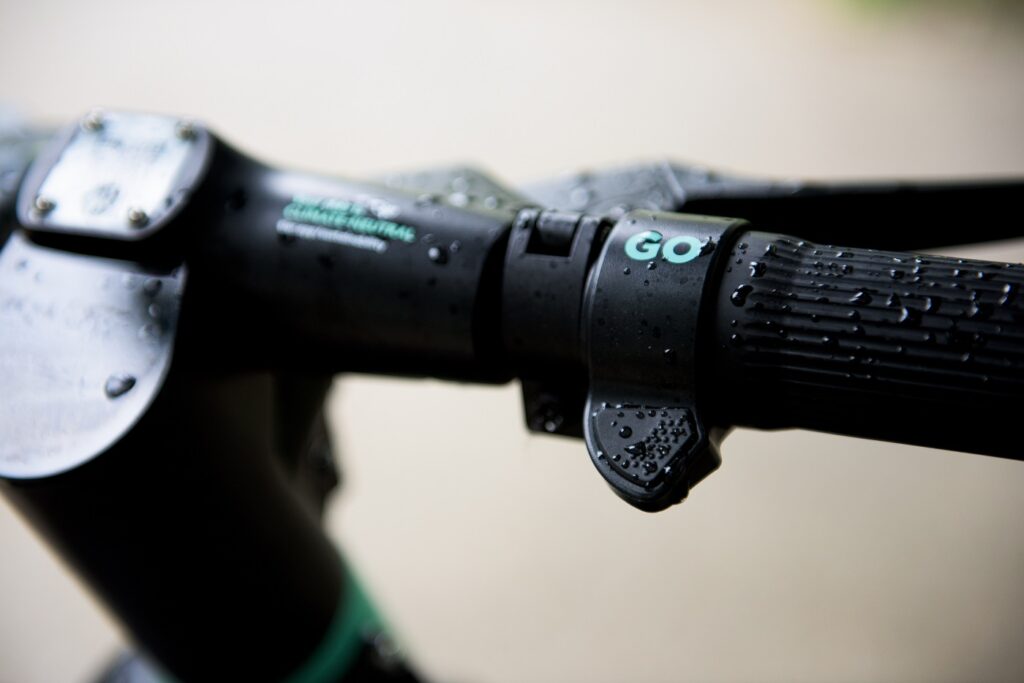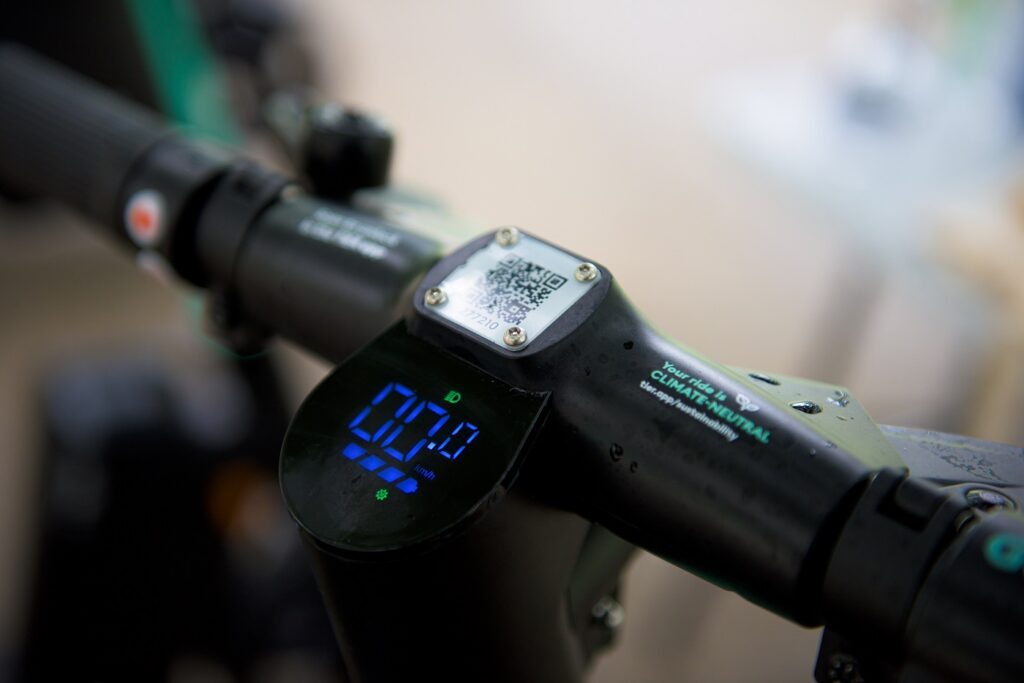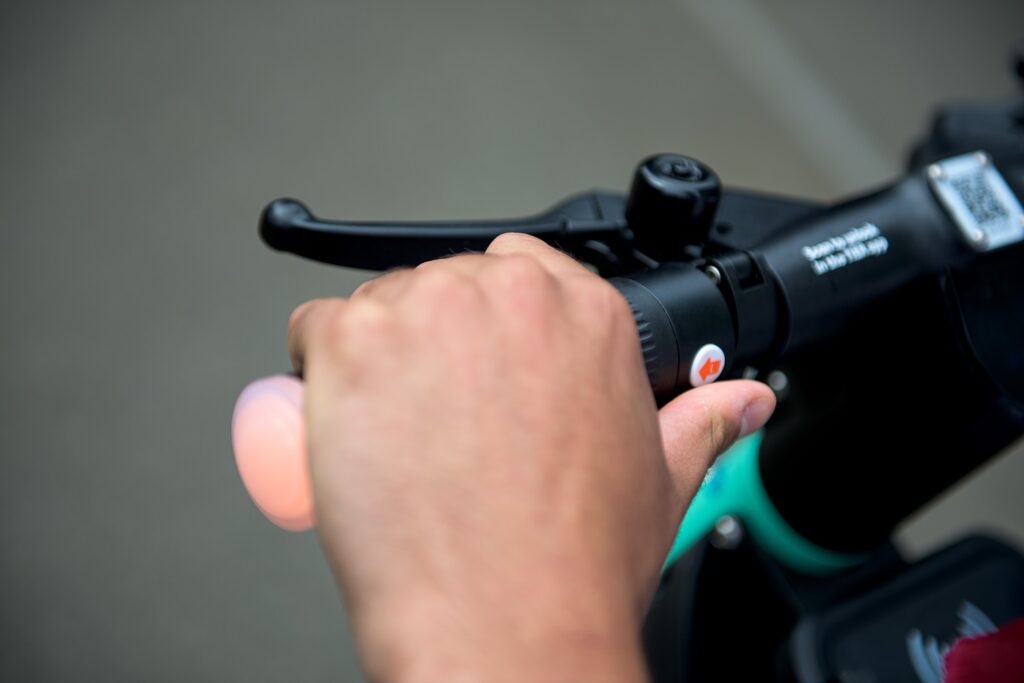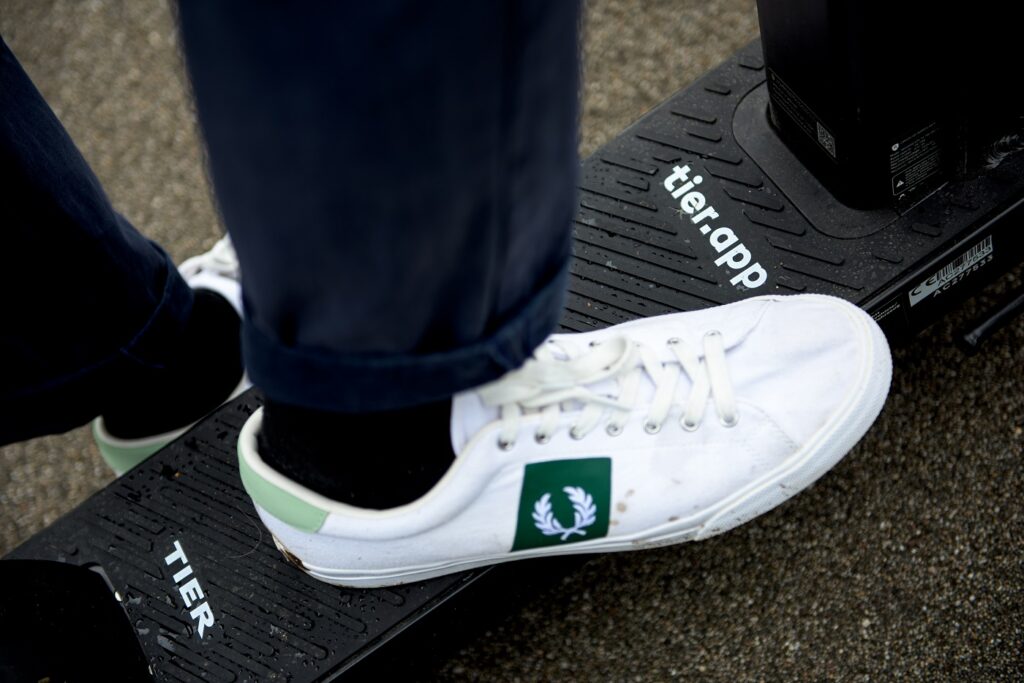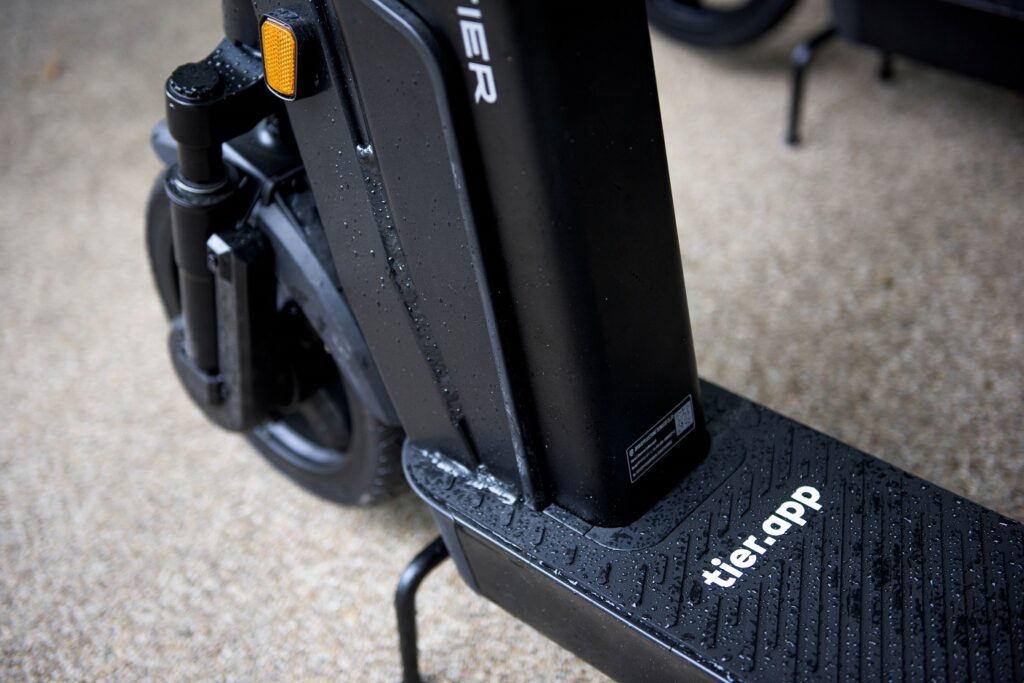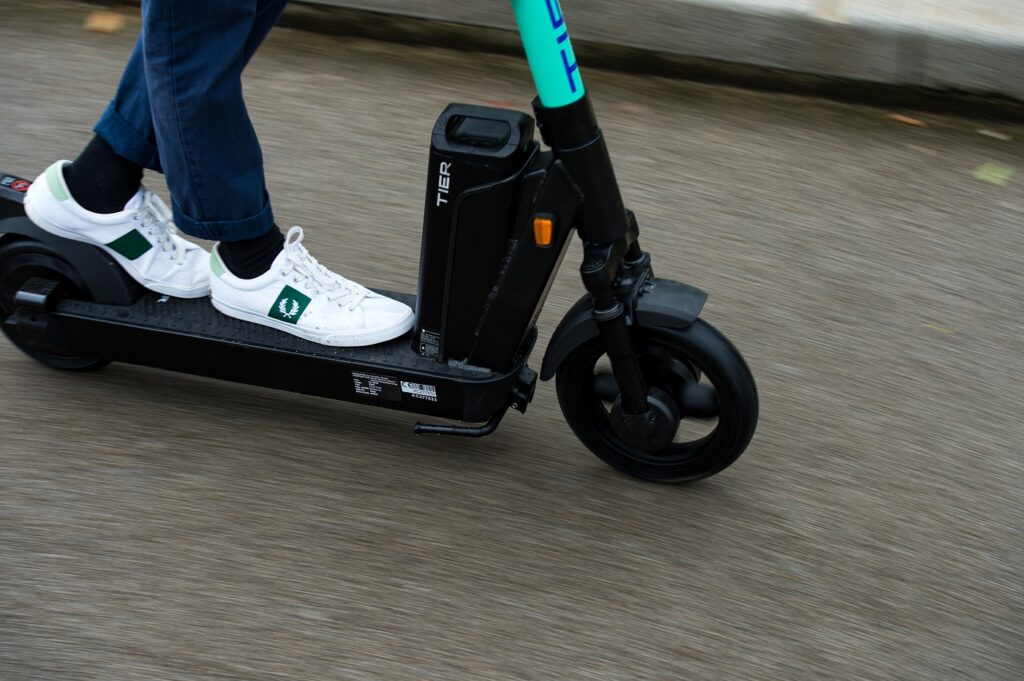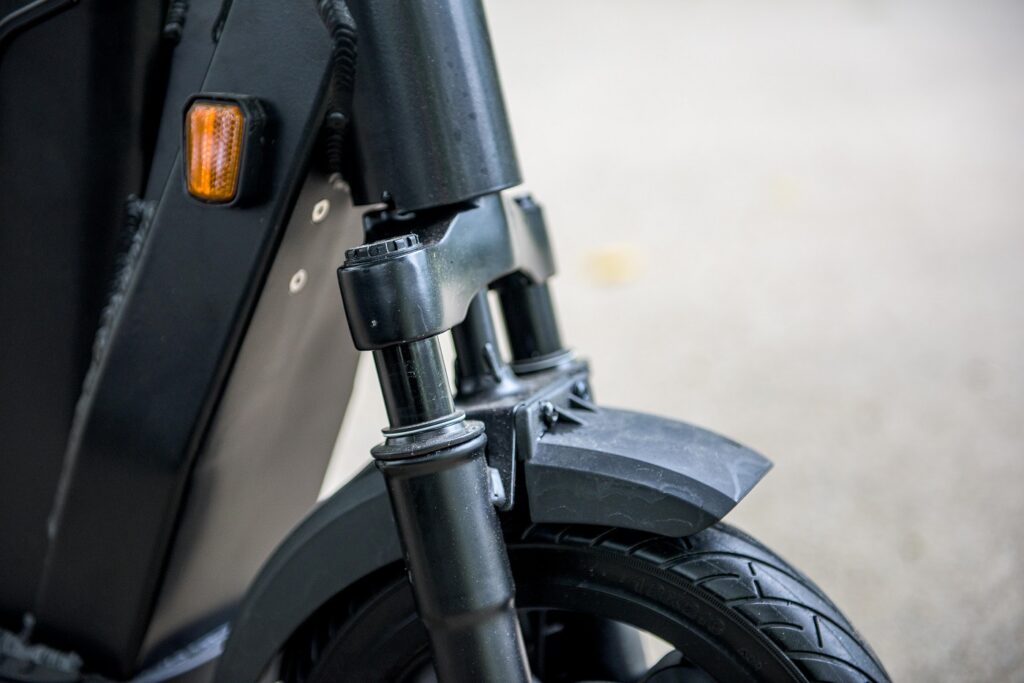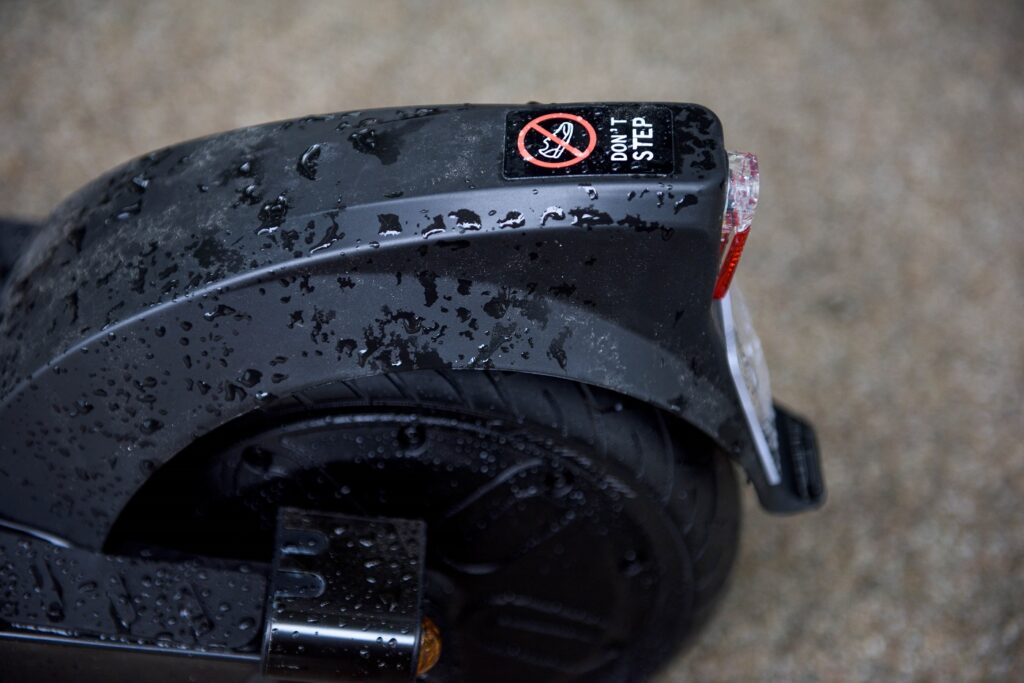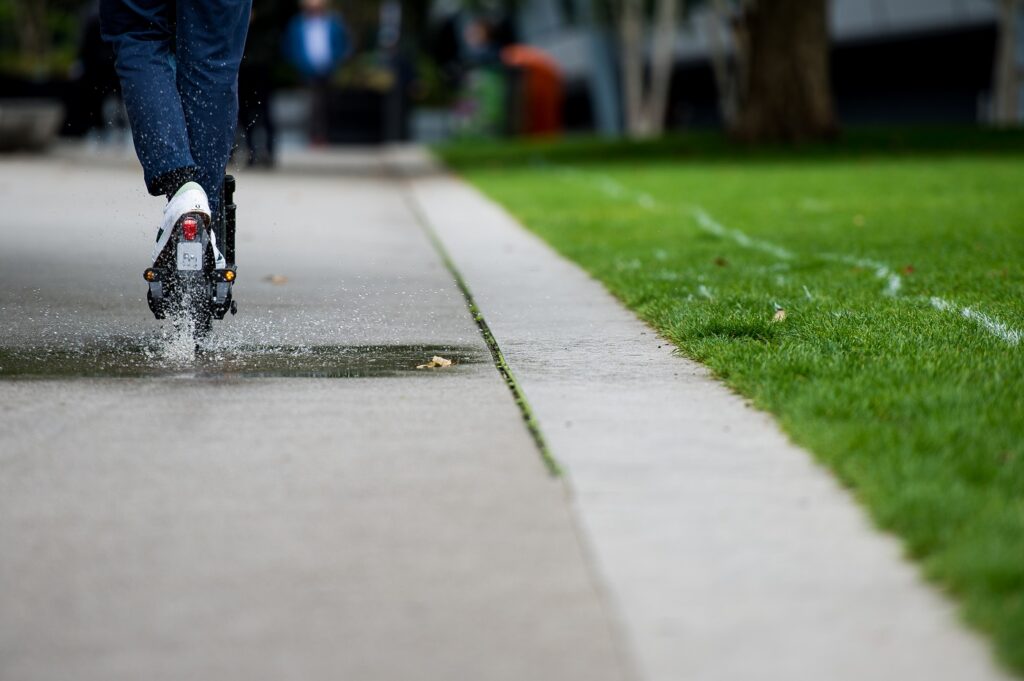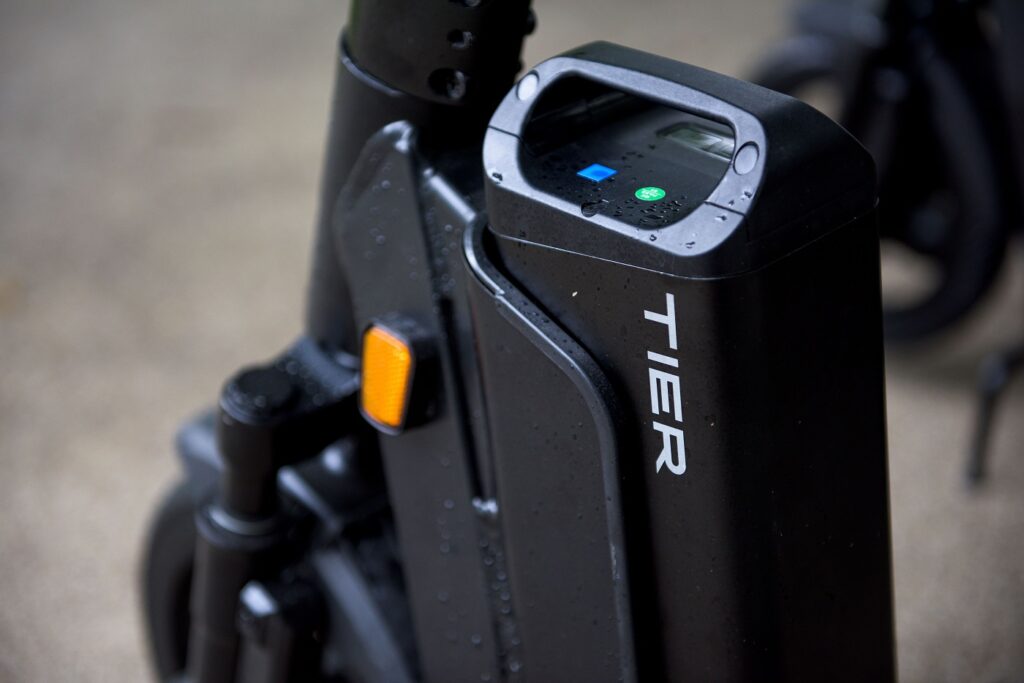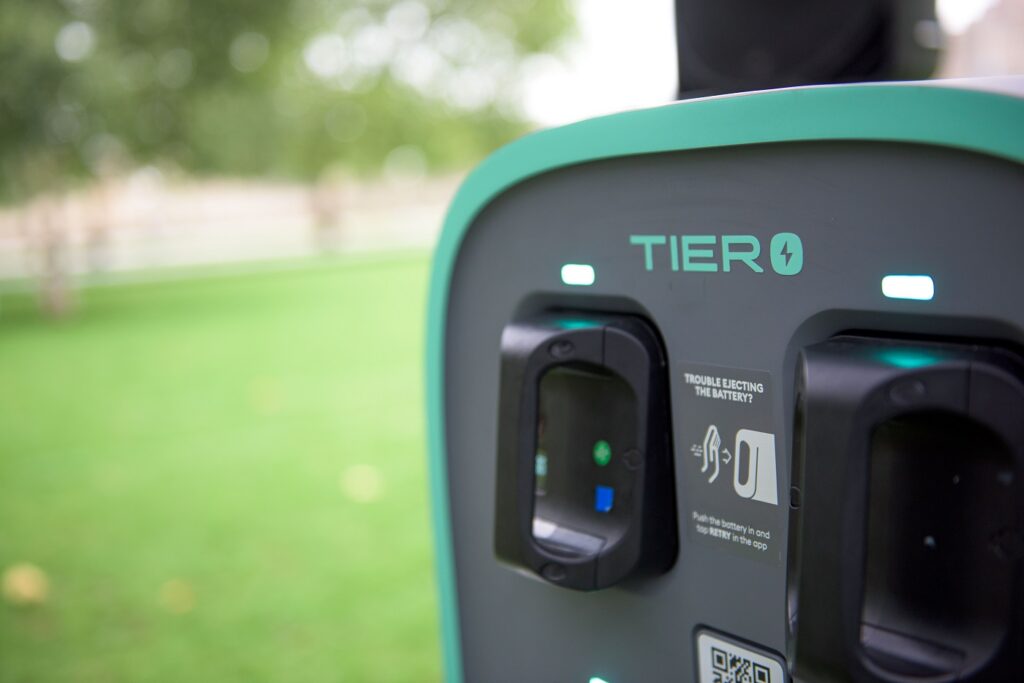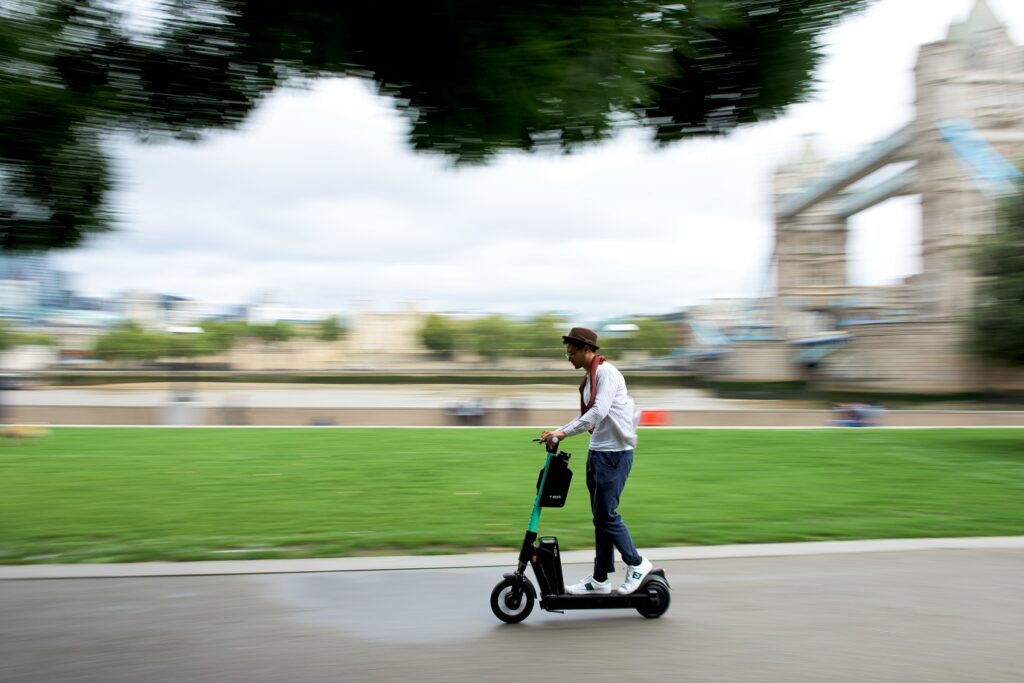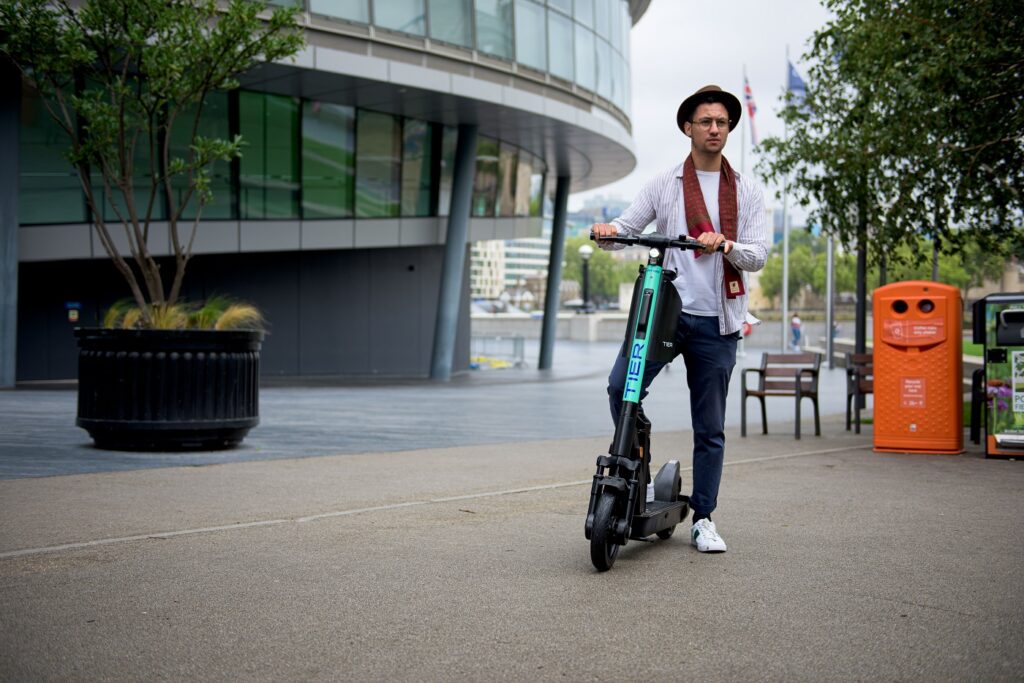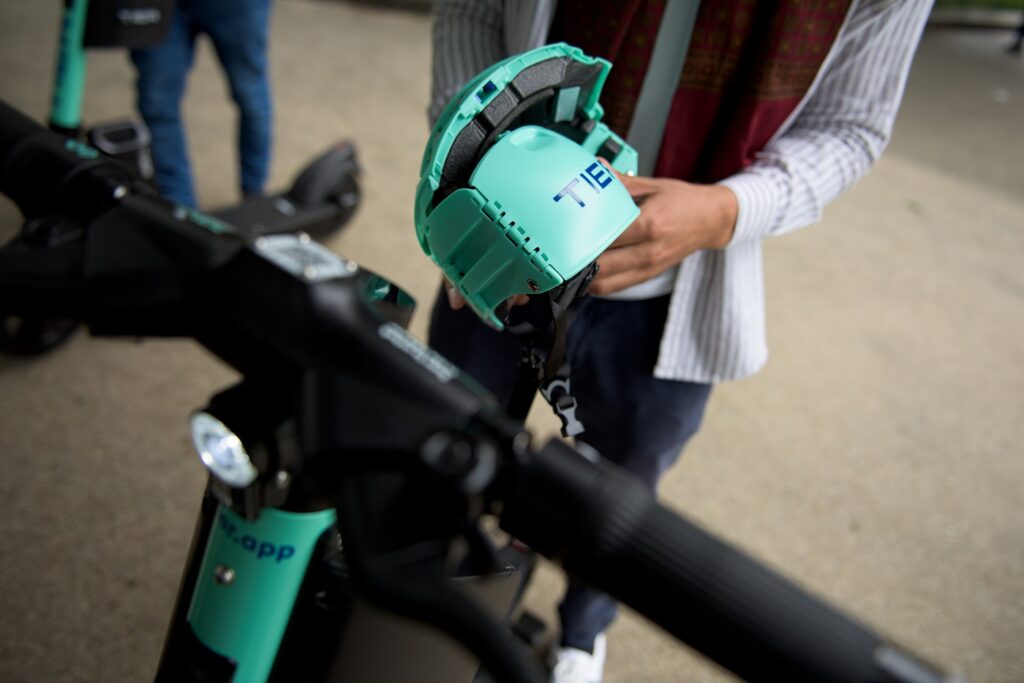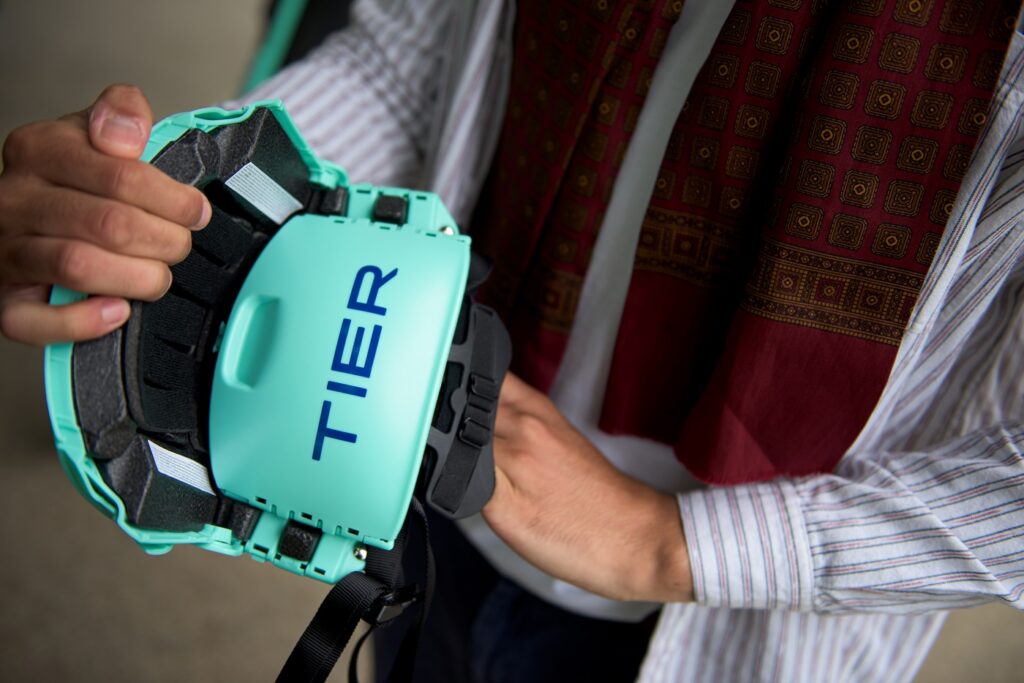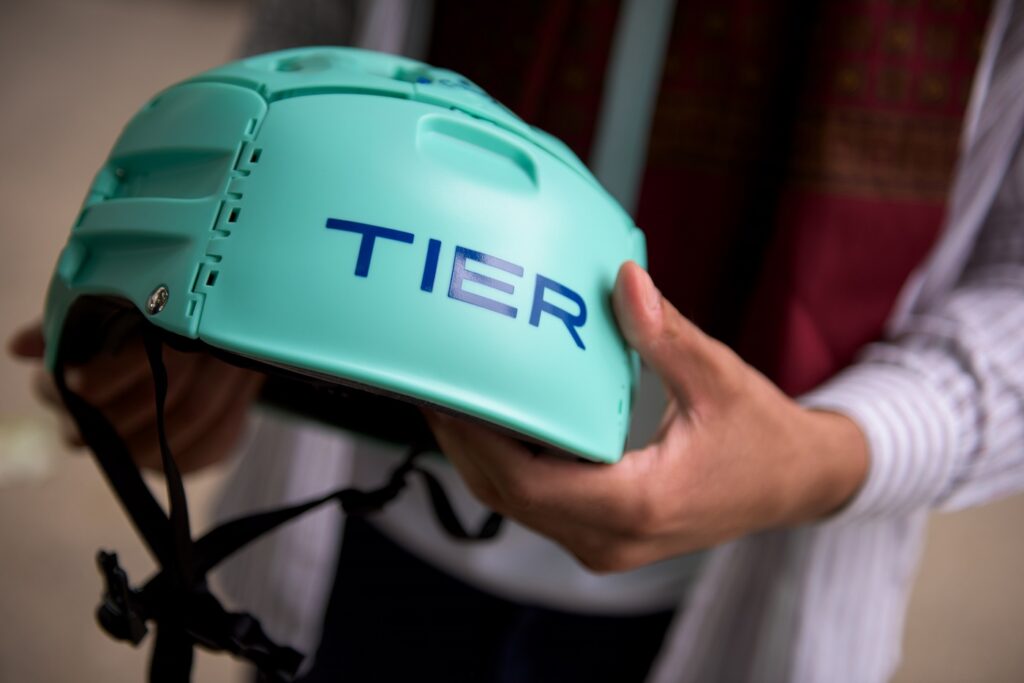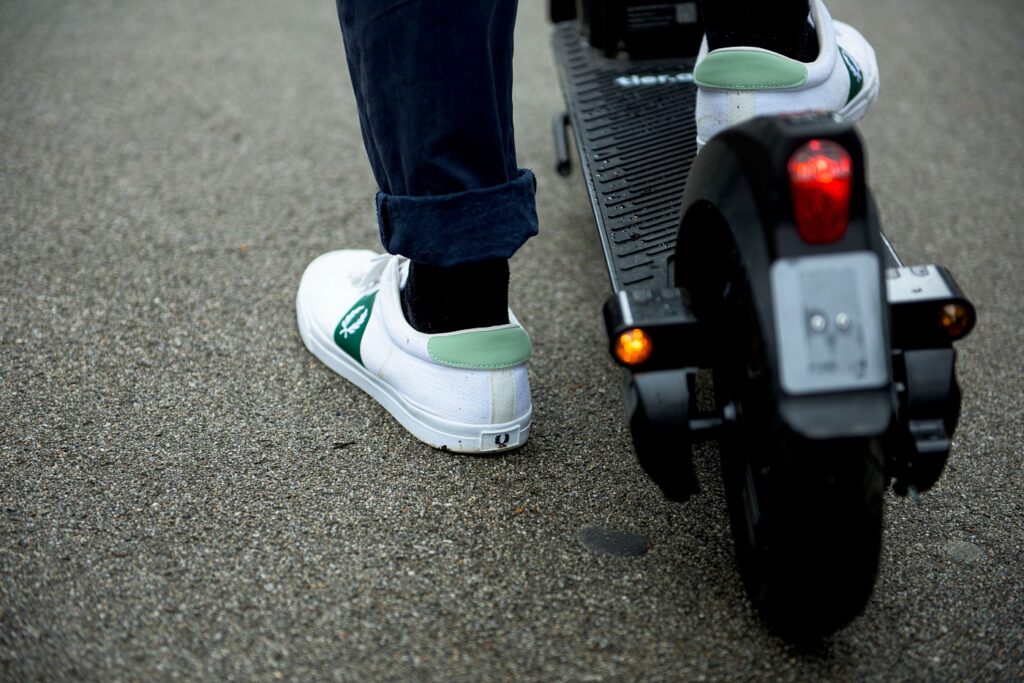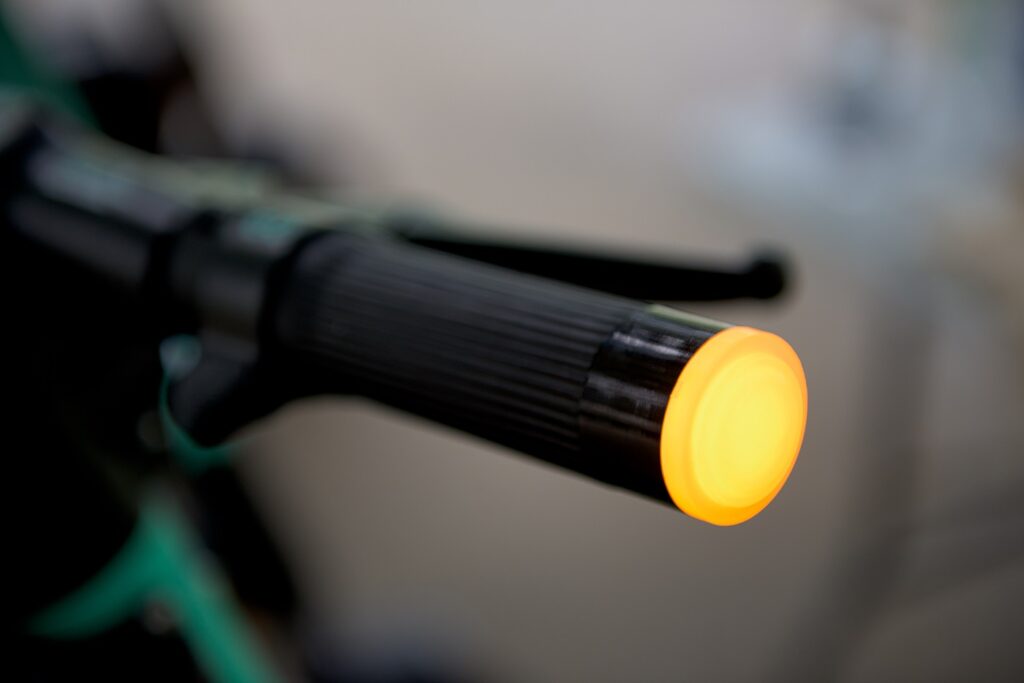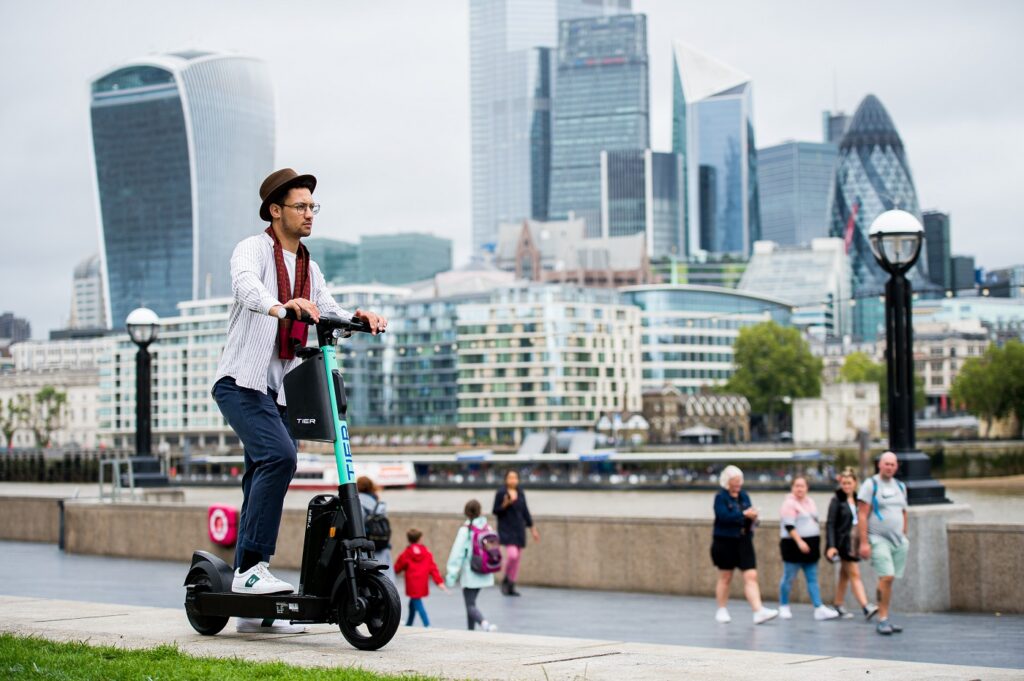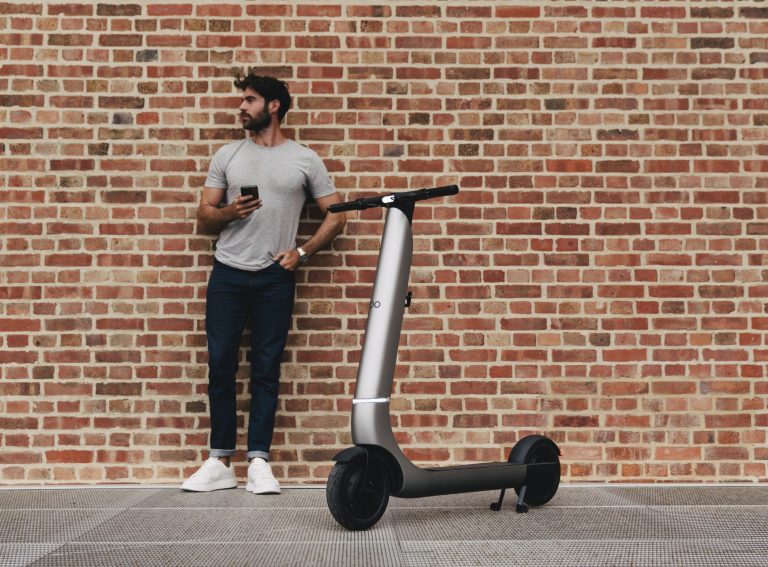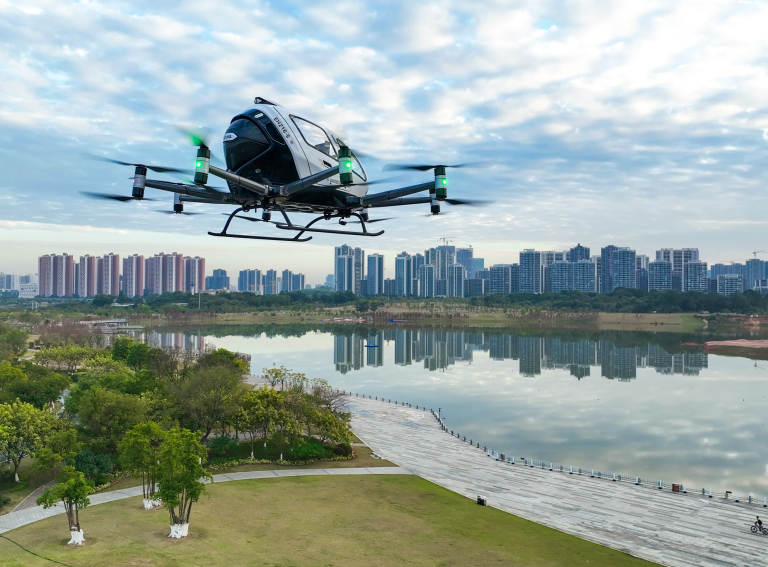Most shared electric scooters are indistinguishable at first glance, apart from the bright colours of their branding. That’s not the case with the newest model from Tier. The German micromobility operator has introduced several inventive features to the Tier Four, including turn signals and user-swappable batteries.
By choosing a spot just in front of Tower Bridge as the venue for its global unveiling, Tier is publicly tilting at British contracts with the new vehicle. Known internally as the ES400B, it has been DfT-approved for UK use, as has its predecessor.
But how does the new scooter perform? We sent Nathaniel, our 21-year-old veteran user of European shared scooter systems, to find out.
1: Controls
“The accelerator is a rotating trigger on the right-hand-side of the handlebars, the same as every scooter I’ve ever ridden,” says Nathaniel of the Tier Four. “On the left-hand-side are a couple of little white buttons with orange arrows, which are for the indicators. They’re quite hard to spot at first but they’re simple to work: press to turn on, press to turn off. The handlebars ends light up; there are also a couple of small signals mounted next to the rear wheel.
“Brake levers are mounted on both sides of the handlebars, exactly like a bicycle. On the left is a standard bicycle bell. There’s a smartphone holder mounted centrally, which has integrated wireless charging.
“I didn’t get a chance to try out the new swappable battery so I can’t comment on how easy – or not – it is to work. More on its placement later.”
2: Ergonomics
“The footplate offers pretty much the same experience as other e-scooters I’ve ridden. There’s more than enough space to get your feet on. The handlebar height and width are about as you’d expect. It feels like it’s designed for about my height – if I was much shorter or taller it may be less comfortable. That said, my friends are all shapes and sizes, and none has ever had difficulty with the handlebar height on any of the scooters we’ve ridden.
“The battery is usually hidden in the deck, under your feet, but here it’s been upended and stands vertically in front of your shins. There’s also a container for a helmet, mounted to the handlebar stem, in front of your legs. It’s opened by using your smartphone.
“I wondered whether these two new features would get in the way when you’re riding, but they’ve been cleverly integrated into the chassis design and don’t intrude.”
3: Ride and handling
“That helmet box and battery may have been moved neatly out of the way of the rider but they are bulky additions to the front of the scooter. It feels like all the weight is over the front wheel, which may be why this model now comes with dual front suspension.
“That forward-biased weight distribution does affect how the scooter feels on the move. It feels like a two-wheeled equivalent of a Mazda MX-5: lightweight, rear-wheel-drive, skinny tyres ready to spin up at any time. Over any uneven ground, if it’s wet, or when braking, I could feel the rear wheel breaking traction.
“That makes the Tier Four feel more unstable when cornering. With other scooters, you don’t turn the handlebars as much as lean when changing direction, much as you do with a bike. This one didn’t respond in the same way, so I needed to put in more directional input from the handlebars. It felt like the scooter was trying to ride me, rather than the other way around.
“I’ve ridden scooters in places like Berlin, Prague, Barcelona from most of the big operators, and the Four is my least favourite from a riding perspective.
“However, as a commuting vehicle, it does the job. What it lacks in handling composure it makes up for by bristling with features, including improved safety measures.”
4: Battery life
“The battery is a 690Wh unit which can be unplugged from the scooter by users and slotted into a local charging station. If you change the battery, you get a free ride. I like that idea.”
The charging unit, which Tiers calls a ‘Powerbox’, can charge four batteries at a time, which takes about three hours. The whole unit simply plugs into the mains. Tier is hoping that local businesses such as shops and cafes will sign up to host the boxes (which are supplied free), effectively turning them into scooter hubs. Tier will cover the electricity bill and choose renewable energy sources wherever it can. Where that’s not an option, Tier will pay to offset the emissions.
“I didn’t get a chance to change the battery on this test ride, so I couldn’t tell you how heavy they feel or how easy it is to perform the swap. If Tier gets a UK trial, I’ll give it a go.”
5: Geofencing
We were unable to assess this, as this was not a live trial on public roads.
6: Safety and comfort
“This is where the Tier Four kicks ahead. As well as lights front and back, which is common to this sector, this vehicle has also got indicators, which means riders don’t need to take their hands off the handlebars. That’s a great help for novice riders in particular.
“The Four’s lights got me thinking: why stop here? Why not make the rear-wheel lamps bigger? Why not add puddle-lights along the bottom of the deck? You could build in LEDs to the whole side of the deck and have the entire thing light up. Tier has hit on something important here and I’d like to see the other micromobility companies follow this lead. As any cyclist will tell you, the more visible you are, the better. Scooter riders are unlikely to be sporting high-vis clothing so on-board lights will be invaluable to improving safety.
“The new scooter also comes with folding helmets, stored in that box mounted to the handlebar stem. The helmet has a replaceable hairnet for health reasons. Under the current Covid conditions, I can’t imagine too many people wanting to use a shared helmet but it’s there if you’d like it.
“On the subject of taking ideas one step further, it would be simple to add a light to the back of the helmet, which could perhaps recharge wirelessly when it’s in the storage box. You can’t beat high-level lights for increased visibility.”
7: Value for money
“As Tier hasn’t yet announced UK trials, there’s no UK pricing. So we can’t say whether this will be competitive or not, although it would be suicidal to buck the market trend which is sitting around 20p per minute at the moment plus unlock fees.
“We do know you’ll be able to earn free rides by swapping batteries, though, which is great for the riders and saves Tier personnel needing to come out quite so frequently to keep the scooters charged.
“All in all, this new Tier Four scooter, with its novel approach to battery swapping and superior safety lights, is a big step forward for the shared scooter industry. Well done, Tier.”

